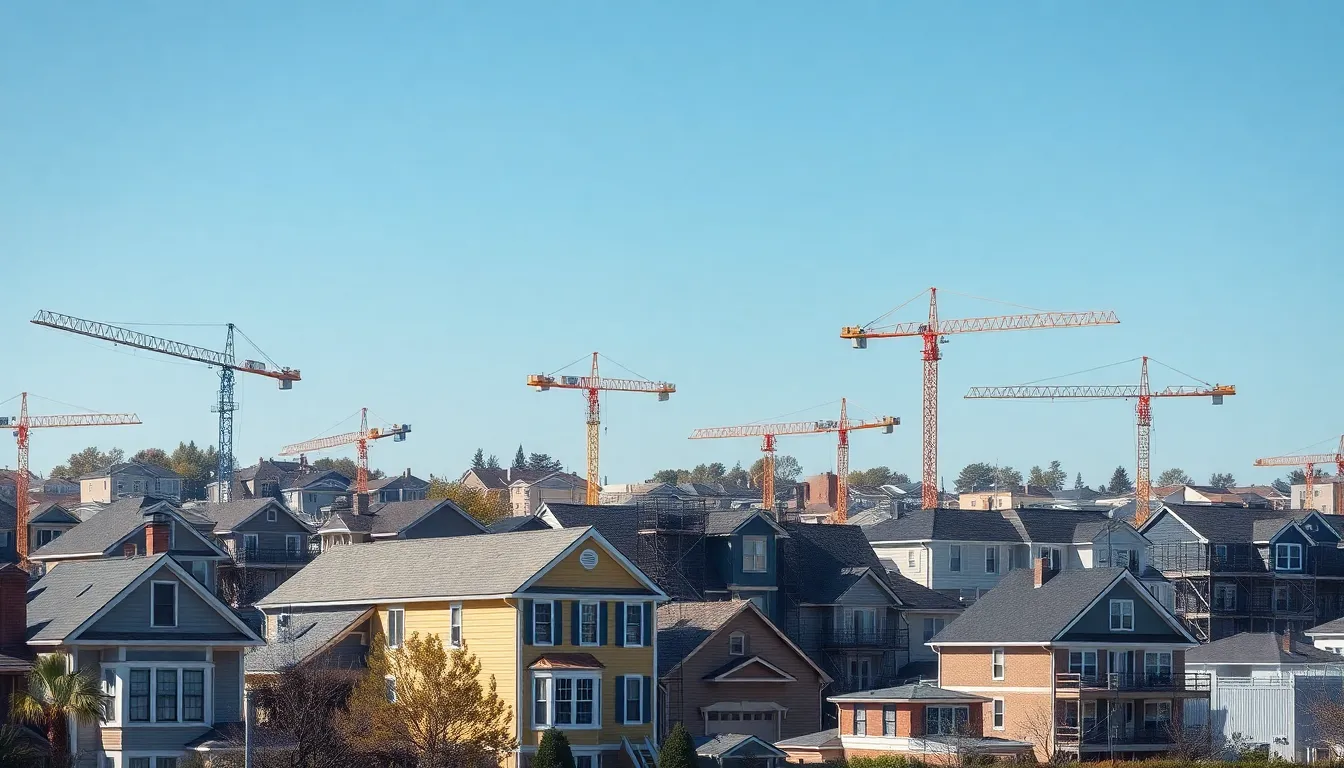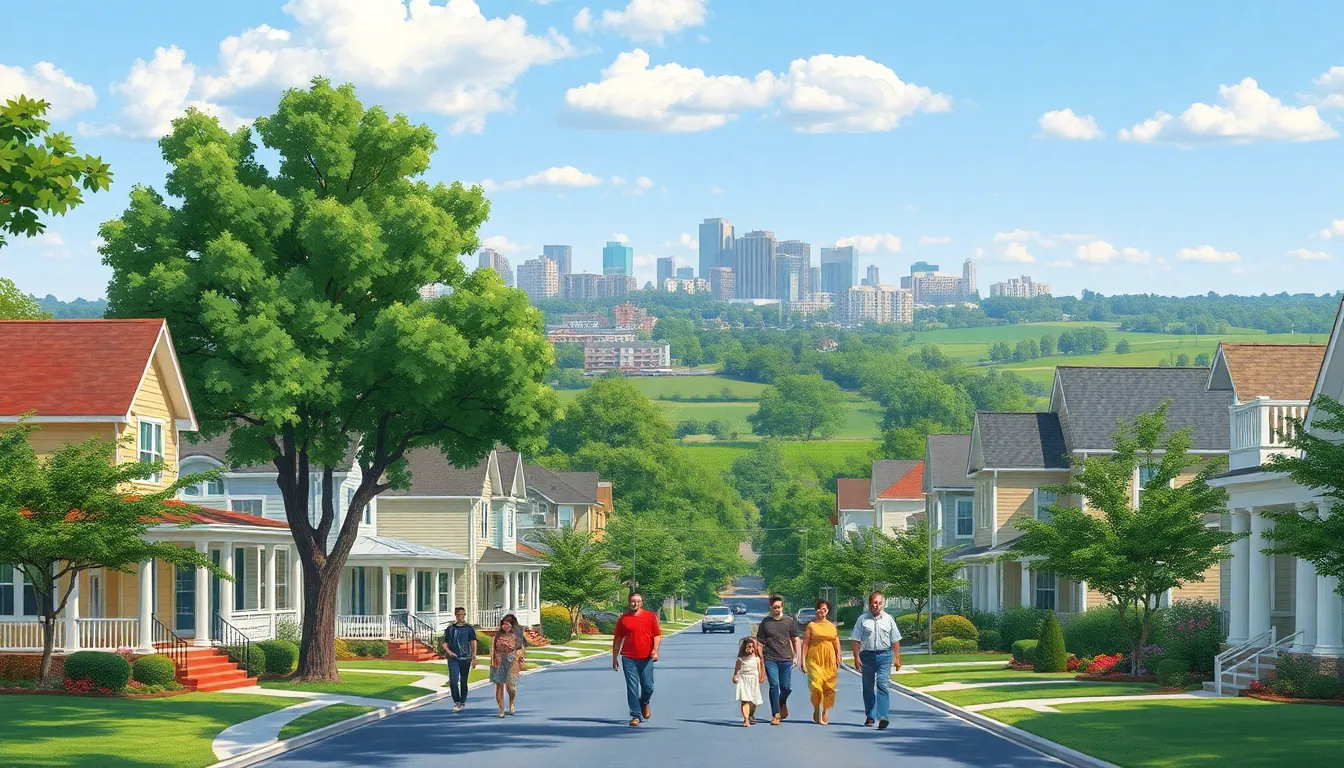In recent years, the term “housing bubble” has gained significant attention as home prices soar and markets fluctuate. A housing bubble occurs when property prices inflate rapidly due to demand, speculation, and easy credit, often leading to unsustainable growth. As buyers rush to invest, they may overlook the warning signs, setting the stage for a potential market crash.
Understanding the dynamics of a housing bubble is crucial for both buyers and investors. It not only impacts individual financial decisions but also shapes the broader economy. As the cycle of boom and bust unfolds, awareness of the underlying factors can help individuals navigate the complexities of real estate markets and make informed choices.
Table of Contents
ToggleUnderstanding the Housing Bubble
A housing bubble refers to a period of rapidly increasing home prices fueled by high demand, speculation, and readily available credit. This phenomenon often results in unsustainable price growth that can lead to significant market downturns.
Definition of Housing Bubble
A housing bubble occurs when property prices exceed their intrinsic value, typically driven by speculation and investor behavior. During a bubble, buyers purchase homes with the expectation that prices will continue to rise. Such behavior often leads to excessive borrowing and heightened market activity, raising concerns about long-term market stability. The eventual correction of these inflated prices often results in market crashes or downturns, impacting homeowners and investors alike.
Historical Context
Historical examples illustrate the dynamics of housing bubbles. In the early 2000s, the U.S. housing market experienced explosive growth. Low interest rates and lax lending standards fueled speculative purchases. Home prices peaked in 2006 before crashing in 2008, leading to widespread foreclosures and the financial crisis. Other countries, such as Japan in the 1990s and Ireland in the mid-2000s, underwent similar experiences of rapid price growth followed by significant declines. These cases provide critical insights into the patterns of housing bubbles and their consequences for economies and individual homeowners.
Causes of Housing Bubbles

Housing bubbles arise from a combination of economic and psychological factors that create an environment for unsustainable price increases.
Economic Factors
Economic factors significantly contribute to the emergence of housing bubbles. Key aspects include:
- Low-interest rates: Low borrowing costs encourage increased home purchasing and speculative investment.
- Increased credit availability: Lenders offering easy credit lead to more buyers entering the market, often without adequate financial scrutiny.
- Rising income levels: Increased disposable income allows more individuals to afford homes, driving up demand.
- Rapid urbanization: Population growth in urban areas heightens demand for housing, pushing prices to unsustainable levels.
Psychological Factors
- Speculative behavior: Investors often speculate on future price increases, creating heightened demand and accelerating price growth.
- Herd mentality: As more people enter the market, others may follow to avoid missing out, further inflating property prices.
- Overconfidence: Investors and buyers may overestimate their ability to manage risks, which fosters reckless financial behavior.
- Fear of missing out (FOMO): The urgency to buy before prices rise leads to irrational purchasing decisions, reinforcing the bubble cycle.
Impact of Housing Bubbles
Housing bubbles significantly affect various stakeholders, including homebuyers and the broader economy. Understanding these impacts helps in navigating real estate markets amid price volatility.
On Homebuyers
Housing bubbles create immediate challenges for homebuyers. Increased property prices often lead to affordability issues, pushing potential homeowners out of the market. Buyers may face higher monthly mortgage payments, driving up debt levels. When bubbles burst, property values may decline sharply, leaving buyers with negative equity, where their mortgage balances exceed their home values. This situation can lead to financial stress, forcing some into foreclosure. Historical data shows that during the U.S. housing bubble, millions lost their homes, highlighting the potential long-term consequences of purchasing during inflated price periods.
On the Economy
Housing bubbles impact the broader economy by influencing consumer confidence and spending. When property prices rise, homeowners often feel wealthier and increase their expenditures. This behavior stimulates economic growth in the short term. However, once a bubble bursts, the negative repercussions can lead to a recession. Industries dependent on real estate, such as construction and home improvement, may experience significant downturns. During the 2008 financial crisis, the collapse of the U.S. housing market resulted in a prolonged economic slump, with millions losing jobs and businesses shuttering. Analysts emphasize that understanding the cyclical nature of housing markets can better prepare economies for such crises.
Recognizing a Housing Bubble
Recognizing a housing bubble involves identifying key elements that signal unsustainable price growth. Awareness of warning signs and market indicators enables stakeholders to make informed decisions when engaging in real estate transactions.
Warning Signs
- Rapid Price Increases: Observing home prices rising significantly faster than historical averages may indicate a bubble. Sustained price growth of 10% or more annually often raises concerns.
- Increased Speculation: Noticing a rise in speculative buying, where investors purchase properties with the hopes of selling at higher prices without intending to occupy them, suggests market overactivity.
- High Leverage Levels: Recognizing a surge in mortgage lending and higher debt-to-income ratios among borrowers can signal excessive borrowing. When many buyers utilize risky loans, this raises the likelihood of defaults.
- Declining Affordability: Identifying a decrease in home affordability, where median home prices outpace median income growth, indicates that properties become less attainable for average buyers.
- Overbuilding: Watching developers accelerate construction projects may point to supply outpacing demand. High vacancy rates alongside new developments often hint at an impending downturn.
Market Indicators
- Home Sales Trends: Analyzing the number of existing and new home sales aids in assessing market strength. A sharp decline in sales after a peak often reflects waning buyer interest.
- Interest Rates: Monitoring interest rate trends helps gauge the cost of borrowing. Low rates typically boost demand, but rapid increases can signal an adjustment phase that might trigger a bubble burst.
- Inventory Levels: Tracking housing inventory levels reveals supply dynamics. Lower inventory alongside high demand often inflates prices, while surging inventory can pressure prices downward.
- Price-to-Income Ratio: Calculating the ratio of median home prices to median household incomes provides insight into market health. A significantly increasing ratio indicates potential unsustainability in home prices.
- Economic Indicators: Reviewing broader economic indicators such as employment rates and GDP growth offers context. Strong economic growth typically supports housing demand, while economic contractions can trigger market corrections.
Understanding the dynamics of housing bubbles is crucial for anyone involved in real estate. By recognizing the signs of unsustainable price growth and the factors that contribute to these phenomena, individuals can make informed decisions. This awareness not only aids buyers and investors in navigating the complexities of the market but also helps them prepare for potential downturns. As history has shown, the impact of a housing bubble can be far-reaching, affecting both personal finances and the broader economy. Staying informed and vigilant can empower stakeholders to mitigate risks and seize opportunities in an ever-changing real estate landscape.






